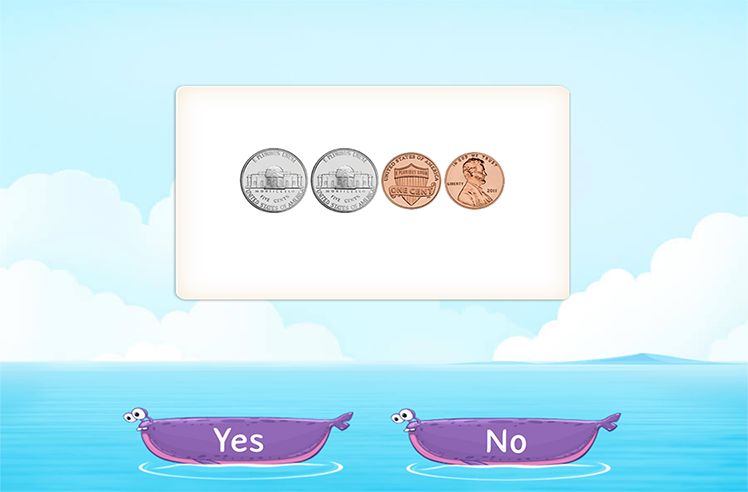Definition of a Line
You can observe lines all around you: from the ruler in your pencil box to train tracks, from the buildings in the city to the walls in your home. Lines are a rich and fascinating concept in mathematics, and there is a lot to learn about them.
Mathematically, a line is a collection of infinite points. In addition, a line extends endlessly in both directions. It is a one-dimensional figure with no end, both to the left and to the right.
Recommended Games
Diagram of a Line
It does not have any endpoint. The two arrows at each end signify that the line extends endlessly and is unending in both directions. The length of a line cannot be measured.
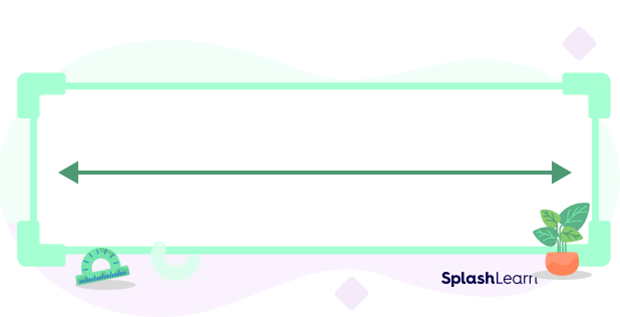
All geometric shapes, such as angles, line segments, polygons, etc., are made up of lines. With the help of lines, points and angles, you can determine figures and shapes.
Recommended Worksheets
Difference between Line and Line Segment
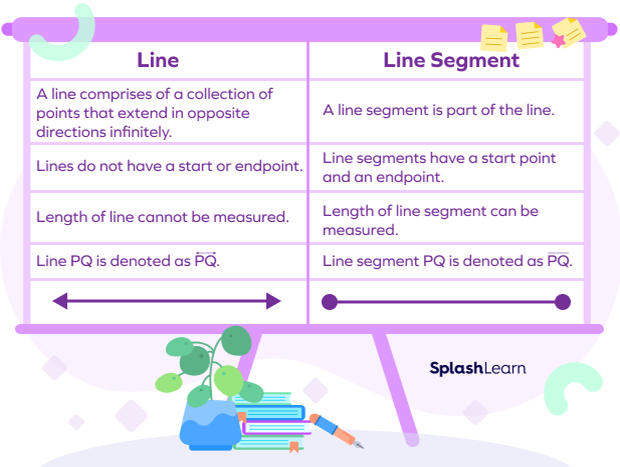
Difference between Line and Ray
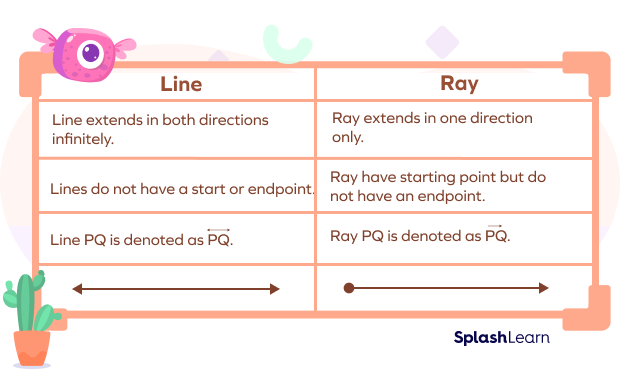
What are the Types of Lines in Geometry?
There are various types of lines used in everyday life. Getting to know the various types of lines helps us to develop a sound understanding of the figures and shapes in math. Let’s look at the geometry line names and the examples of types of lines in everyday life.
a) Curved Lines:
A line that is not straight is a curved line. If a point does not move in one direction, we get a curve.

b) Straight Lines:
The shortest line joining any 2 points is a straight line. If a point moves in only one direction, we get a straight line.
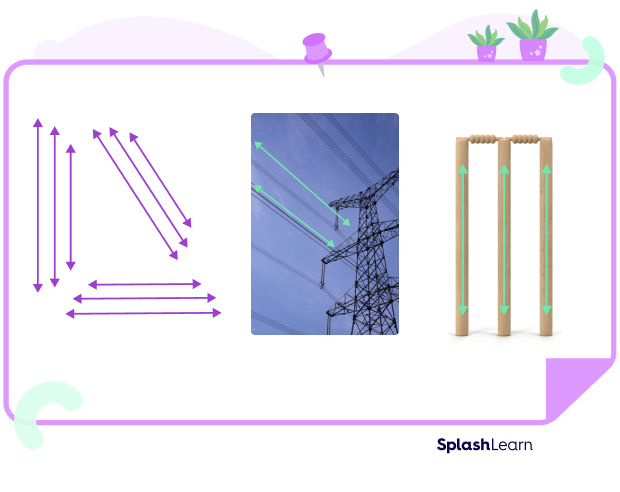
c) Horizontal Lines:
A horizontal line is a line that runs from left to right in a straight line. Horizontal lines are parallel to the x-axis and perpendicular to the y-axis.
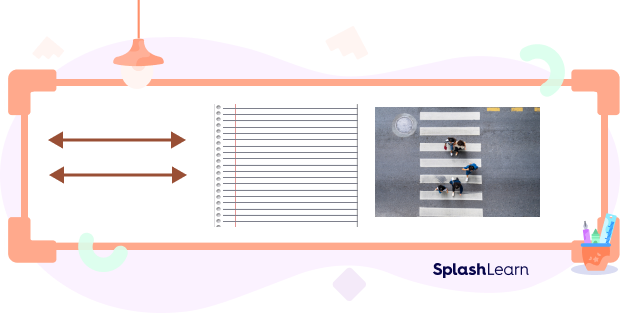
d) Vertical Lines:
Vertical lines run straight up and down from top to bottom or bottom to up. Vertical lines are parallel to the y-axis and perpendicular to the x-axis.
e) Parallel Lines:
In geometry, parallel lines can be defined as two lines in the same plane that are at equal distance from each other and never meet.
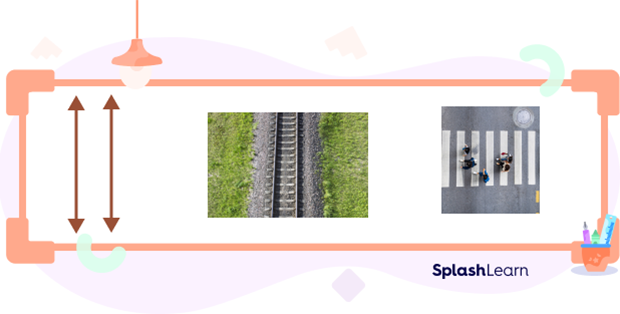
f) Intersecting Lines:
When two or more lines cross each other in a plane, they are called intersecting lines. The intersecting lines share a common point, which lies on all the intersecting lines.
g) Perpendicular Lines:
In geometry, perpendicular lines are defined as two lines that meet or intersect each other at a right angle (90°).
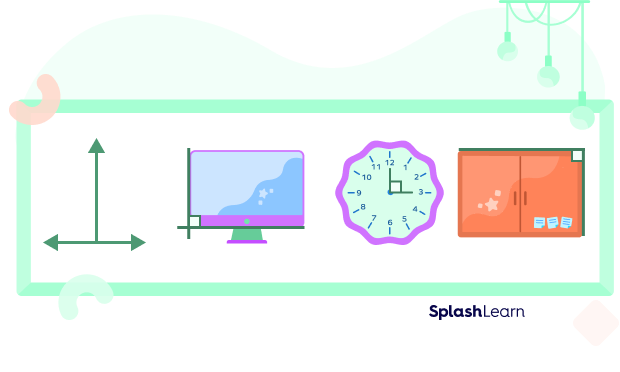
h) Transversal Lines:
A line that intersects two or more given lines at different points is called a transversal line.
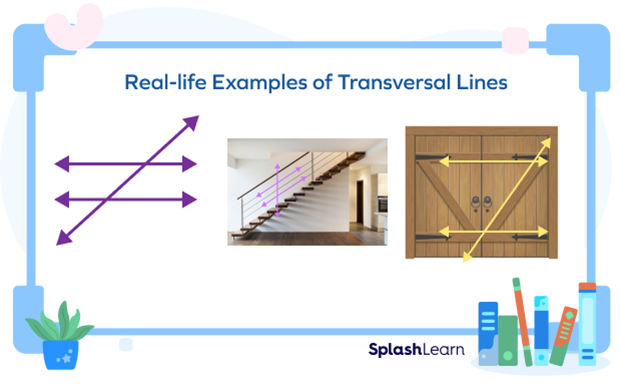
Solved Examples
Example 1: Match the figures with the types of lines.
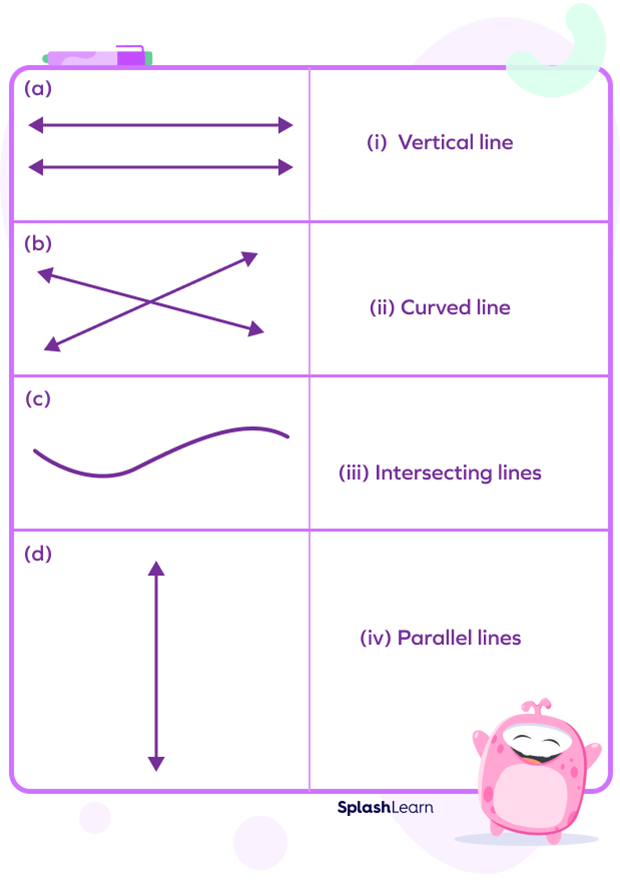
Solution: The types of lines for the figures are as follows:
- Parallel lines
- Intersecting lines
- Curved line
- Vertical line
Example 2: State whether the following is true or false.
- A line is a set of points in a straight path that extends in opposite directions without ending.
- A line has a fixed length.
- Horizontal lines are parallel to y-axis.
- A ray extends in one direction only.
Solution:
- True
- False
- False
- True
Example 3: Write the name of a given line, ray, or line segment.
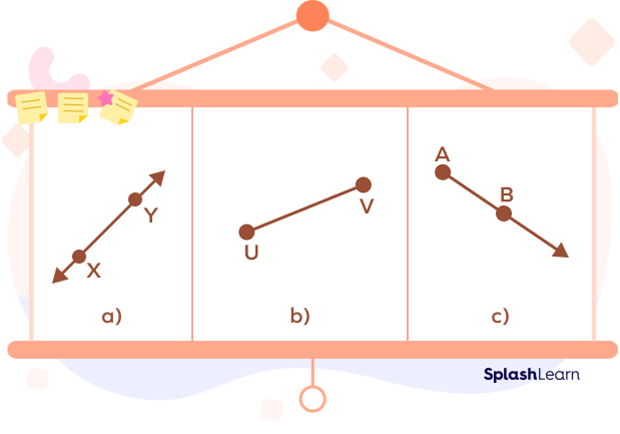
Solution:
- $XY^\leftrightarrow, YX^\leftrightarrow$
- $\overline{UV}$
- $\overrightarrow{AB}$
Example 4: Observe the given figure and answer the given questions.
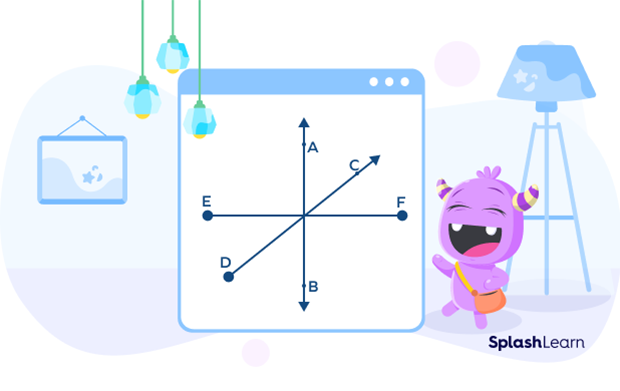
- Name the ray.
- Name the line.
- Name the line segment.
Solution:
- $\overrightarrow{DC}$
- $AB^\leftrightarrow$
- $\overline{EF}$
Practice Problems
Types of Lines - Definition With Examples
A ray can be defined as a line with ___________.
A ray can be defined as a line with one endpoint.
What is the direction of horizontal lines?
A horizontal line goes from left to right.
Write the name of the figure.

A line extends in both directions infinitely.
Name the transversal line in the given figure.

UV intersects RS and PQ at different points. So, UV is a transversal line.
Frequently Asked Questions
What are concurrent lines?
Lines are said to be concurrent if they intersect at a single point.
What are collinear points?
Collinear points are points that lie on the same straight line.
What is the difference between line and line segment?
A line extends in both directions infinitely. Lines do not have a starting point or an endpoint. A line segment is a part of a line. It has fixed length.
What is the difference between intersecting lines and perpendicular lines?
When two or more lines cross each other in a plane, they are called intersecting lines. The intersecting lines share a common point, which lie on all the intersecting lines. Perpendicular lines are defined as two lines that meet or intersect each other at a right angle (90°).
Conclusion
All geometric shapes, such as angles, line segments, polygons, etc., are made up of lines. With the help of a line, a point, or an angle, you can determine figures and shapes.And to learn about the figure and lines, you have to understand the various types of lines. Lines are the foundation of any figure or polygon. Learn other interesting math topics through fun games, worksheets, and lessons on SplashLearn.
















